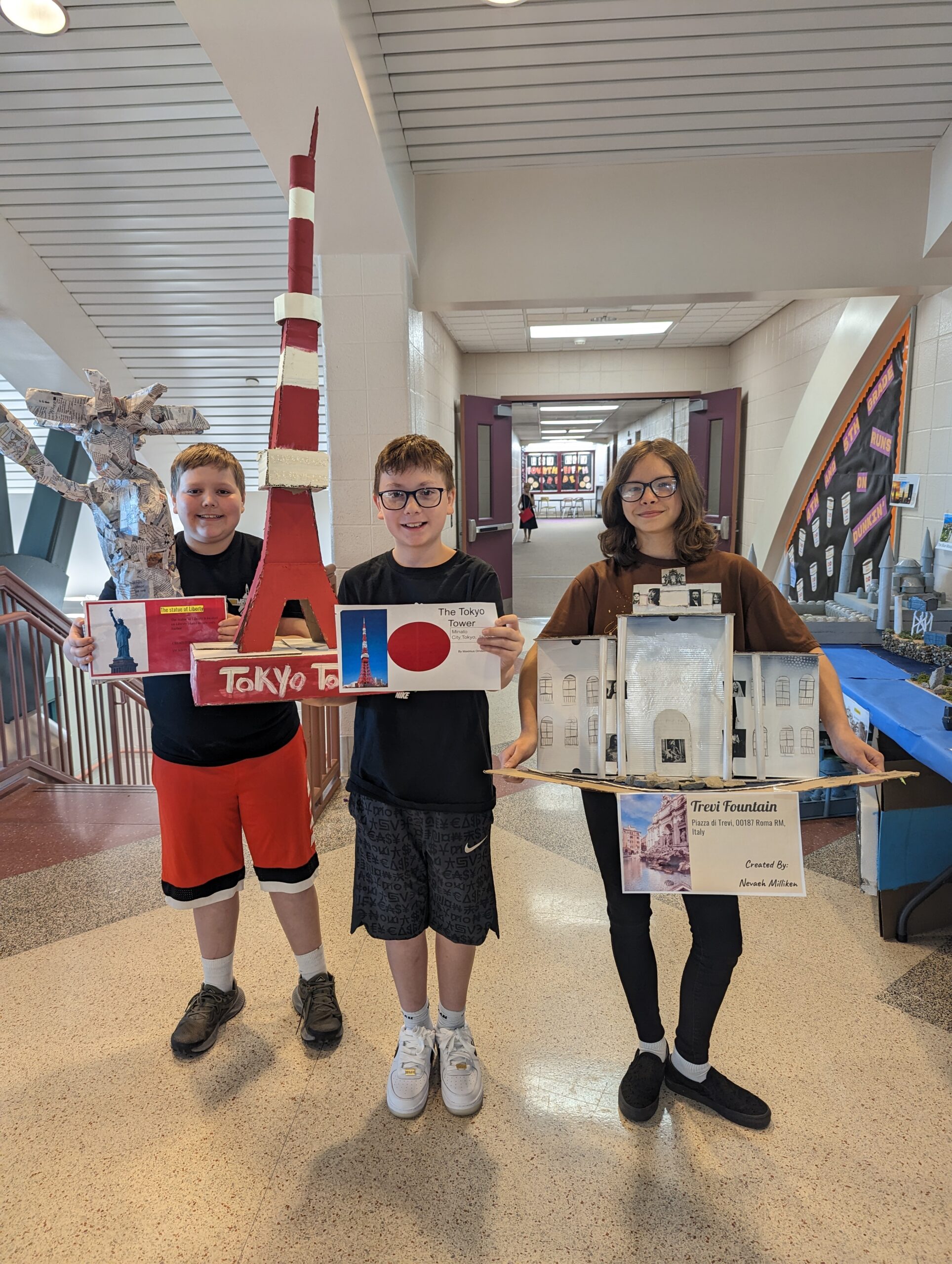Creativity in the classroom benefits everyone. Creativity motivates children to learn, exercise multiple parts of the brain, builds resilience, and can often connect educational material to struggling or disengaged students.
To help students integrate their classroom learning creatively, Waynesburg Central Elementary School teacher Ashton Shaffer introduced an exciting assignment to her students. The sixth-grade students are studying world geography, and Shaffer wanted a project that would develop their mapping skills, as well as let them see the many tourist attractions around the globe. Shaffer developed the ‘Trash to Treasure’ project. She had used the project in class years ago, but added additional detail to this year’s tasks.
Using only recyclables and trash, as well as glue, tape, and paint, students built a famous international landmark. Students chose a landmark, either from the list or one of their own choosing, thoroughly researched the landmark, its location, its architecture, and its modern day importance. They mapped the landmark, drew a rough sketch and decided on the materials that they would use for the build. Using their research, students prepared a three-paragraph essay explaining the significance of their chosen landmark. They also created a digital slide arrangement for their class presentation.
“Students were nervous at first about having to create a model of their landmark, but after a few days and examples, they rocked it!” Shaffer said.
Many of the students used cardboard for their build, but some went about it differently. One student used old newspapers to paper mache his project of the Statue of Liberty. Others incorporated natural elements, like rocks and moss, to add realism.
After completing their projects, the students installed the landmarks in the front hallway of the sixth-grade wing, complete with a photo of the actual landmark. Students later delivered a two-minute presentation about their landmark to the class.
“The students have brought in some impressive work,” Shaffer said. “I plan on continuing the tradition [for future classes].”
